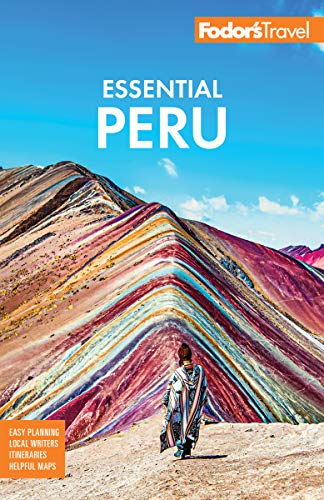Tucked into the folds of the Andes, 2,760 meters (9,055 feet) up on the slopes, Ayacucho is a colorful, colonial-style town. Though its looks are Spanish—think glowing white-alabaster mansions with elegant columns and arches—at heart it's an indigenous enclave inhabited by people who still speak Quechua as a first language and don traditional costume for their daily routine. Locals greet visitors with warmth and amazement, and the city’s 180,000 people revere artists with an energy matched only by that expended during religious celebrations like Carnaval and Semana Santa. Religion is a serious pursuit in this city of churches, where more than 30 sanctuaries beckon worshippers at all hours.
Human settlement in Peru began in the valleys around Ayacucho about 20,000 years ago. Dating from this era are the oldest human remains in the country—and perhaps in the Americas—found in a cave network at Piquimachay, 24 km (15 miles) west of the city. Over the centuries, the region was home to many pre-Hispanic cultures, including the Huari (Wari), who set up their capital of Huari 22 km (14 miles) from Ayacucho some 1,300 years ago. When the Inca arrived in the 15th century, they ruled the lands from their provincial capital at Vilcashuamán.
In the 1530s, the Spanish came and conquered the reigning Inca, and Francisco Pizarro founded Ayacucho in 1540. First named Huamanga ("land of falcons") for the local avian species, Ayacucho grew from a small village into a bustling city known for its many colonial-style churches. Nearly 300 years later, it was one of the centers of Peru's bid for independence from the Spanish, when a Peruvian army led by Antonio José de Sucre defeated the last peninsular forces at the nearby Pampa de Quinua on December 9, 1824. The Iglesia Santo Domingo in Ayacucho sounded the first bells of Peru's independence, trumpeting the city’s role in achieving the country's freedom.
It took a century more before the city built its first road links west to the coast, and the road to Lima went unpaved through the 1960s. Ayacucho might have opened to tourism then but for the influence of Abimael Guzmán Reynoso, a philosophy teacher at the San Cristóbal University of Huamanga. His charismatic preaching touted a Maoist-style revolution in response to the age-old problems of rural poverty among the country’s indigenous peoples. Guzmán founded Sendero Luminoso (Shining Path) in the late 1960s, and spurred it to militant action in March of 1982, when bombs and gunfire first shook Ayacucho's cobbled streets. The fighting between the Shining Path and the government killed thousands of ayacuchanos, and by the mid-1980s, the city was cut off from the rest of Peru. Then, in 1992, police arrested Guzmán in a hideout above a Lima dance studio, and the Shining Path fell apart. Although Ayacucho is now peaceful, tourism has been slow to establish itself outside of Semana Santa, and the city receives only about 1,000 visitors a month. Those who do come enjoy the benefits of hassle-free strolls down the well-built pedestrian promenades.
Ayacucho's isolation from the modern world means that to visit is to step back to colonial days. Elegant white huamanga buildings glow in the sunlight, with bright flowers spilling out of boxes fronting high, narrow wooden balconies. Beyond the slim, straight roads and terracotta roofs, cultivated fields climb the Andes foothills up to the snow line. Electricity, running water, and phones are occasionally unreliable, but infrastructure is generally modern, and deep poverty in the region has diminished significantly. Visitors are frequently delighted to see banks and businesses housed in 16th-century casonas (colonial mansions), even as women in traditional Quechua shawls draped over white blouses, their black hair braided neatly, stroll through markets packed with produce and crafts stalls.




